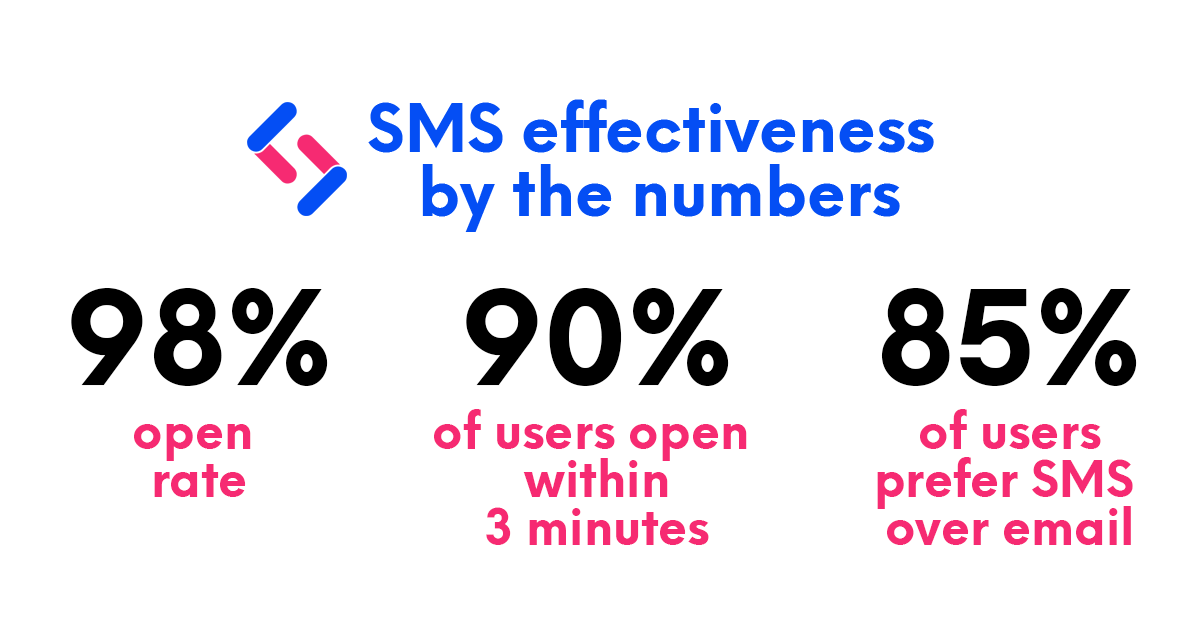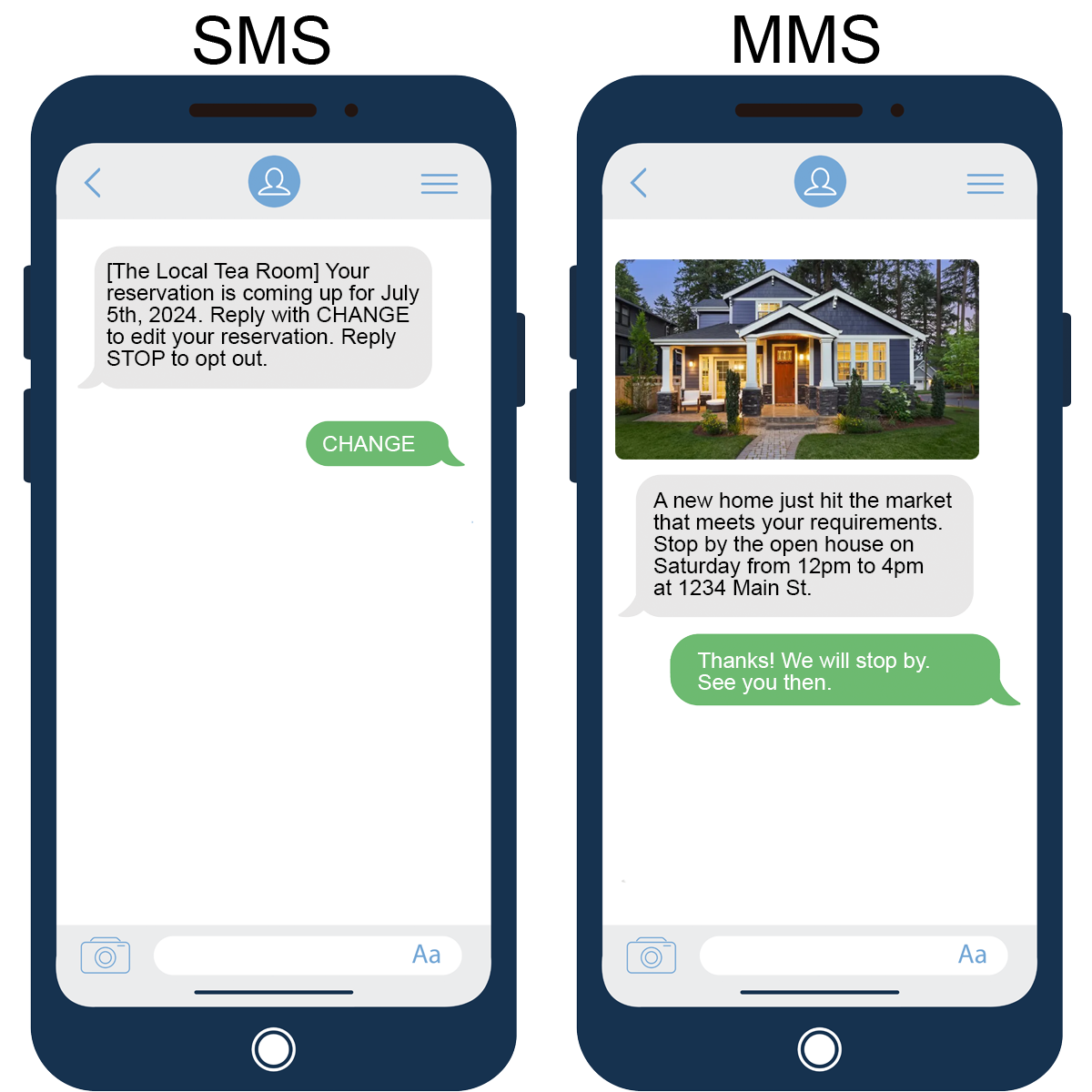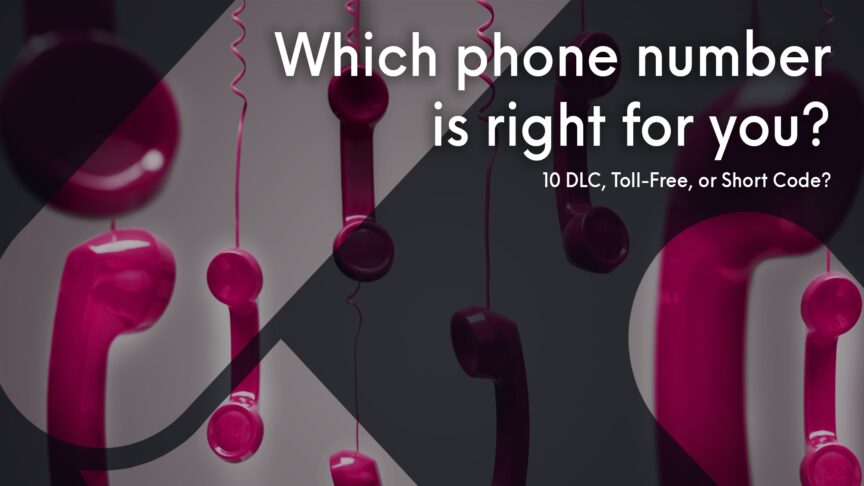Comparing SMS Messages and MMS Messages
Messaging is an essential tool for customer engagement, as it’s one of the most effective channels to reach your audience. Virtually every mobile phone, regardless of its sophistication, is capable of sending and receiving text messages. With 7.5 billion mobile users worldwide and an average open rate of 98%, your message will be seen by as many eyes as possible when you incorporate mobile messaging campaigns into your company's engagement strategy.
Messaging boasts a high level of reliability – unlike emails that can get lost in spam folders, or phone calls that get sent to voicemail, mobile messages are delivered directly and opened almost instantaneously. Even in areas with poor internet connectivity, SMS often remains functional.
When it comes to mobile messaging, both SMS and MMS are fundamental tools that serve distinct purposes. While both variations of messaging have similarities, they have different capabilities and use cases. In this post, we’ll explore the key differences between SMS and MMS to understand how each plays a unique role, so that you can choose which is best for your customer engagement strategy.
What is SMS?
SMS stands for short message service, and is usually the standard when we refer to text messaging. SMS is plain text only - any images will be converted to links in the message. Internet service is also not required to deliver an SMS message. They also need to be short and simple, with a character limit of 160.
What is MMS?
MMS stands for multimedia messaging service. As the name implies, these are mobile messages that allow you to send images, audio, video, animated GIFs, and even PDFs. MMS, unlike SMS, requires an internet connection to successfully send.
The difference between SMS and MMS
The ability to reach your audience via mobile messaging is an indispensable tool. Reliability, accessibility, and effectiveness make it a timeless medium for personal, business, and emergency communications, no matter whether you choose to use SMS and MMS.
However, which one you should adopt largely depends on your use case and what type of content you want to send.
1. Content type
SMS is limited to text-only messages. Each SMS can only contain up to 160 characters. If the message exceeds this limit, it is often split into multiple texts, which are then reassembled by the recipient's phone. This makes SMS ideal for messages you want to keep short and sweet.
MMS, on the other hand, allows for a much richer variety of content. In addition to text, MMS messages can include images, videos, audio files, GIFs, and even PDFs. This makes MMS a more versatile tool for sharing various types of content and creating more engaging and visually appealing experiences.
2. Message size
With a limit of 160 characters per message, SMS is ideal for short, concise, to-the-point messages. It's perfect for quick updates, alerts, confirmations, and multi-factor authentication.
MMS can handle much larger messages, up to several megabytes. This capacity allows users to send high-resolution images, videos, and other large files, making it suitable for more detailed and visually rich communications that make an emotional impact. MMS enjoys a character limit of 1600 per message, making it ideal for more lengthy communications.
3. Engagement rates
SMS messages boast high open rates, typically around 98%, with most being read within minutes of receipt. The concise nature of SMS makes it highly effective for immediate communication needs.
MMS usage results in high engagement rates, thanks to the inclusion of multimedia content. Recipients are more likely to open and interact with messages that contain images, videos, or audio, making MMS a powerful tool for capturing attention, resulting in a 20% higher opt in-rate than SMS alone.
4. Cost
SMS is typically cheaper than MMS because of the simple nature of content being delivered. However, other factors, like the type of phone number being used to send the message, will determine the total cost. If you go over the 160 character limit, you can also incur segmentation fees.
MMS shines when there is a need to share rich multimedia content, offering a more engaging and versatile messaging experience - and the higher opt-in rate can be worth the cost.
5. Use cases
SMS use cases
Quick updates - Ideal for sending brief, timely information such as confirmations, reminders, and alerts.
Mass communication - Frequently used for emergency alerts and customer service due to its low cost and high open rate.
Security - Commonly used for multi-factor authentication due to its simplicity and reliability.
MMS use cases
Marketing - Effective for sending promotional content that can be enhanced with images, videos, or other multimedia elements to engage customers.
Product demos and troubleshooting - Perfect for introducing new products or visual demonstrations.
Event information - Useful for sending event invites, maps with locations or directions, and seasonal greetings.
Advantages and limitations of SMS
The pros of SMS
Clear and direct communication
With only a limited number of characters, there is little room for fluff. This direct approach helps recipients quickly understand the message. In a world where people are bombarded with information from multiple channels, a clear and concise message stands out.
Reliability
Since SMS relies on cellular networks rather than the internet, messages can be sent and received even in areas with poor internet connectivity.
Cost-effectiveness
The simplicity of SMS helps minimize costs while maximizing impact - but you’ll want to avoid segmentation charges and keep within the 160 character limit.
The cons of SMS
Character limits
Brevity is a powerful communication tool, but it can also be a hindrance to your message. This constraint can make it challenging to convey detailed information or complex messages effectively.
Lack of impactful media
We live in a visual-first digital age. SMS messages are limited to plain text, which restricts their ability to engage recipients through various means. The absence of multimedia options can make SMS less compelling.
Advantages and limitations of MMS
The pros of MMS
Enhanced engagement
MMS is inclusive of all kinds of multimedia content and has a 1600 character limit. This ability to go beyond a short text opens up a world of possibilities for more expressive and impactful communication. Visual content is inherently more engaging and can capture the attention of recipients more effectively than plain text.
Personal touch and emotional connection
You know how the saying goes: a picture is worth a thousand words. Multimedia content conveys emotions and personal touches that text alone cannot. A picture of a smiling face or a high-energy video can create a deeper emotional connection.
Educational and informative content
MMS is a powerful tool for education and information dissemination. Video tutorials, images of educational materials, and product troubleshooting can make things simpler to understand.
The cons of MMS
Higher costs
There is a higher cost associated with sending multimedia messages compared to standard text messages, making MMS a less attractive option for budget-conscious strategies.
Dependence on internet connectivity and compatibility
MMS requires an internet connection to send and receive messages. Users who do not have mobile data or are in locations with weak network coverage may experience delays or fail to receive MMS messages altogether. Not all mobile devices and networks support MMS - older phones and some budget models may not be equipped to handle multimedia messages.
Use SMS APIs for your marketing campaigns with SignalWire
Messaging has transformed the way we communicate, and now it’s time for it to transform your marketing campaigns. Create personal connections, educate, inform, and engage your audiences with SMS and MMS.
SignalWire's cloud-based infrastructure ensures scalability and reliability, allowing you to send and receive large volumes of messages without worrying about capacity limitations or service interruptions. Get started today for free by signing up for a SignalWire space, explore our guides on messaging, and bring your questions to our Slack community.





